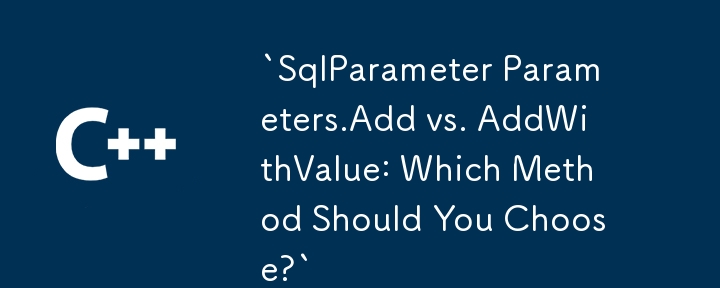Found a total of 10000 related content
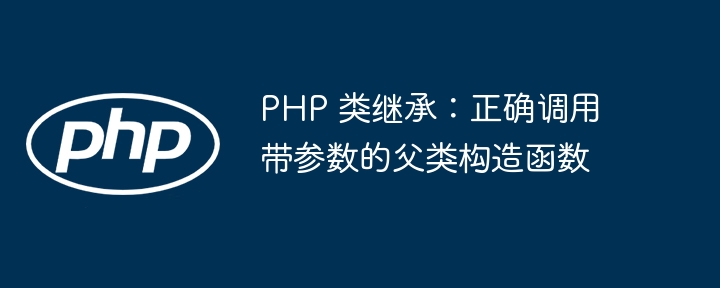
PHP class inheritance: correctly call the parent class constructor with parameters
Article Introduction:In PHP class inheritance, when the subclass overrides the parent class constructor, if the parent class constructor defines the parameters, the subclass must explicitly pass these necessary parameters to the parent class through parent::__construct() . Ignoring this step will result in a runtime error because the parent class cannot receive the parameters required for its initialization, affecting the correct construction and functionality of the object.
2025-08-22
comment 0
601
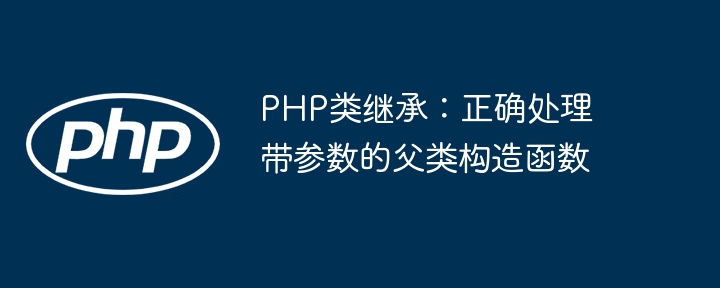
PHP class inheritance: Correctly handle parent class constructors with parameters
Article Introduction:In PHP class inheritance, when a subclass defines its own constructor, it is crucial to correctly call the constructor of the parent class, especially when the parent class constructor requires parameters. This tutorial will explain in detail how to pass necessary parameters to the parent class constructor through the parent::__construct() method in a subclass to ensure the correct initialization of the parent class attributes, thereby avoiding common runtime errors and maintaining the robustness of the code.
2025-08-22
comment 0
276
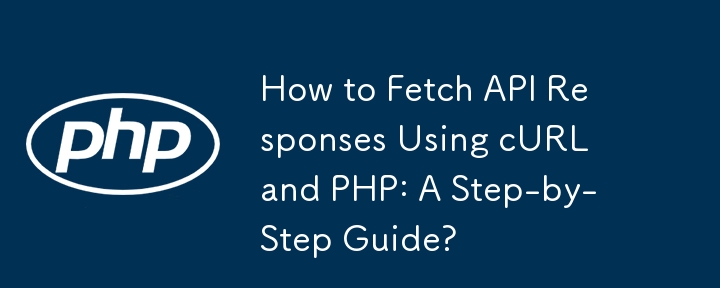
How to Fetch API Responses Using cURL and PHP: A Step-by-Step Guide?
Article Introduction:This article provides a code snippet for a PHP class that utilizes cURL to fetch API responses. The snippet defines a function to retrieve the API response, handle redirects, set user agent, and manage timeouts, making it a useful tool for interactin
2024-10-26
comment 0
1108

Methods that correctly call parent class constructors with parameters in PHP class inheritance
Article Introduction:In PHP class inheritance, when the subclass defines its own constructor, if the parent class constructor requires parameters, the subclass must explicitly pass these parameters to the parent class through the parent::__construct() method. This article will explain this mechanism in detail, and use sample code to show how to correctly call and pass parameters to the parent class constructor in the subclass to avoid errors caused by missing parameters and ensure that the parent class logic is correctly initialized.
2025-08-22
comment 0
682
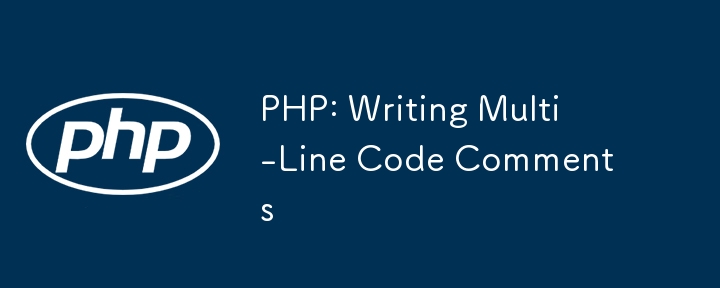
PHP: Writing Multi-Line Code Comments
Article Introduction:PHP multi-line comments use // wrap content, suitable for explanation logic or blocked code; it is recommended that PHPDoc style be used for function and class comments to improve IDE recognition and development efficiency; comments should be clear and useful, avoid redundancy, and focus on explaining the reasons for implementation rather than the operation itself. For example: / comment content/or /*PHPDoc comments/defines function parameters and return values, and pay attention to closing symbols to avoid syntax errors. Good comments need to be combined with context to help understand complex logic or special handling methods.
2025-07-16
comment 0
243
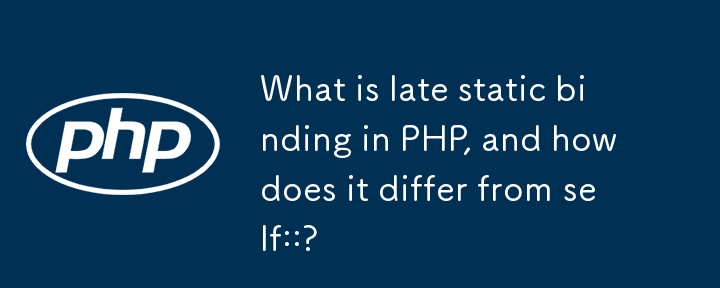
What is late static binding in PHP, and how does it differ from self::?
Article Introduction:In PHP, latestatic binding solves the limitations of self:: in inheritance through the static:: keyword. When using self::, it always points to the class that defines the method, not to call or inherit it; while static:: determines the target class at runtime, thus correctly referring to the subclass that is actually called. For example, if a method defined in the parent class is called by a subclass, self::class returns the parent class name, and static::class returns the child class name. 1. Use self:: to strictly refer to the current class definition; 2. Use static:: to support inheritance and allow subclass rewriting behavior; 3. Common application scenarios include factory mode
2025-06-17
comment 0
508
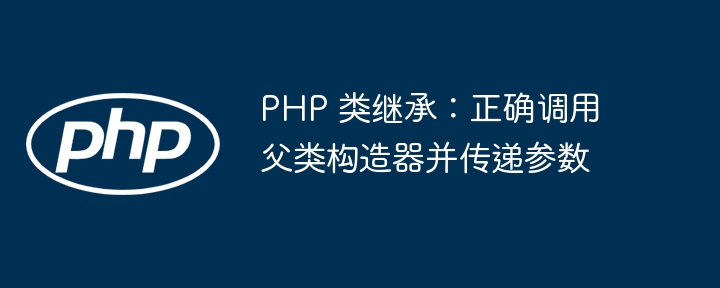
PHP class inheritance: correctly call the parent class constructor and pass parameters
Article Introduction:This article discusses in detail how subclasses correctly call the parent class constructor and pass the required parameters in PHP class inheritance. When a subclass defines its own constructor, if the parent class constructor requires parameters, these parameters must be explicitly passed to the parent::__construct() method, otherwise it will cause a runtime error. The article guides developers to avoid such common pitfalls through specific examples and best practices, ensuring that the initialization logic in the inheritance chain is executed correctly.
2025-08-22
comment 0
974
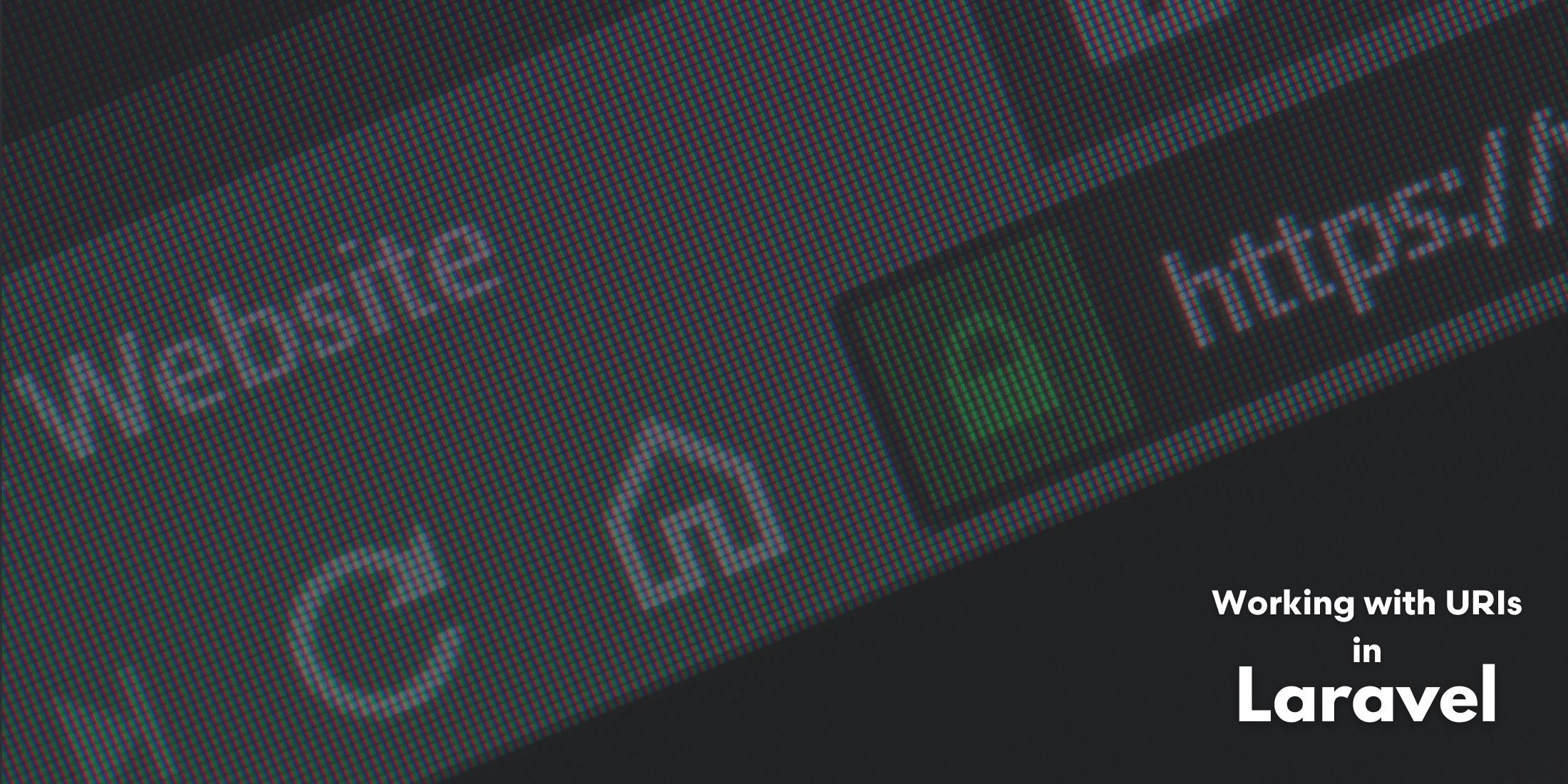
Working With URIs in Laravel
Article Introduction:Laravel 11.35 introduces the Uri class based on the PHP League URI library. Uri simplifies the process of manipulating and processing URIs in Laravel applications and provides some convenient features about named routing.
Basic Operation
The core function of the Uri class is to create and manipulate URI strings, including queries, fragments, and paths:
use Illuminate\Support\Uri;
$uri = Uri::of('https://laravel-news.com')
->withPath('links')
->wit
2025-03-05
comment 0
846
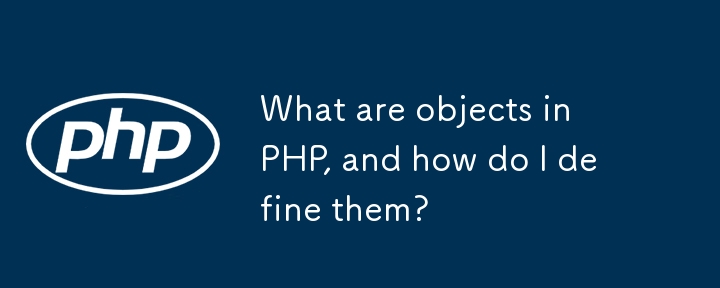
What are objects in PHP, and how do I define them?
Article Introduction:In PHP, an object is an instance of a class, and a concrete instance is created by a class to model things in the real world. 1. Classes are blueprints, such as classDog defines structures; 2. Objects are instances, such as $myDog=newDog() to create specific objects; 3. Use the -> operator to access properties and methods; 4. The constructor __construct() is used to initialize properties; 5. It is recommended to use meaningful naming, pay attention to access control, and understand reference passing. After mastering these basic concepts, you can further learn OOP features such as inheritance and interface.
2025-06-22
comment 0
353

Suggesting Carbon with Composer - Date and Time the Right Way
Article Introduction:Carbon: PHP date and time processing tool
Carbon is a lightweight PHP library for simplifying the processing of dates and times. It is based on and extends the core DateTime class and adds many convenient methods to make date-time operation easier. This article will introduce the basic usage of Carbon and demonstrate how to use it in a real project.
Core points:
Carbon is a library designed for PHP date and time operations, extends the core DateTime class and adds user-friendly methods to provide a more intuitive experience.
The library can be installed using Composer and can be instantiated from strings, timestamps, or other DateTime or Carbon instances
2025-02-16
comment 0
540

Using Composer: Simplifying Package Management in PHP
Article Introduction:Composer is a PHP dependency management tool that manages project dependencies through composer.json file. 1. Install Composer: Run several commands and move them to the global path. 2. Configure Composer: Create composer.json file in the project root directory and run composerinstall. 3. Dependency management: Specify the library and its version through composer.json, and use semantic version number control. 4. Use Autoloading: Define the automatic loading rules of the class through the autoload field to simplify development. 5. Package management: Supports private library management, defines the private library address through the repositories field
2025-04-18
comment 0
1022

How to create a ZIP archive in PHP?
Article Introduction:Create a ZIP file using ZipArchive class: instantiate the object, call the open() method to create the file, addFile() or addFromString() to add content, and finally call close() to save. 2. The entire folder can be added to the ZIP by traversing the directory. 3. Make sure to check the return value of open() and ensure write permissions. 4.PHP uses standard ZIP compression by default. Simple and reliable operation.
2025-08-30
comment 0
709

How do I use asset bundles in Yii?
Article Introduction:Using Yii's assetbundles is a best practice for managing CSS and JS files. It defines resource groups centrally through PHP classes, and automatically handles dependencies, merging and caches. 1. The resource package is a PHP class used to organize CSS, JS and other resources and declare their dependencies; 2. Register resource packages in the view or layout to automatically generate HTML tags; 3. Different resource packages can be conditionally registered according to user role or page type; 4. The resource files are placed in web/css and web/js by default, and the path can be customized; 5. Use the assetManager configuration to add timestamps to achieve version control, solving browser caching problems. Correct use of resource packages can improve project structure clarity and loading efficiency
2025-07-08
comment 0
813
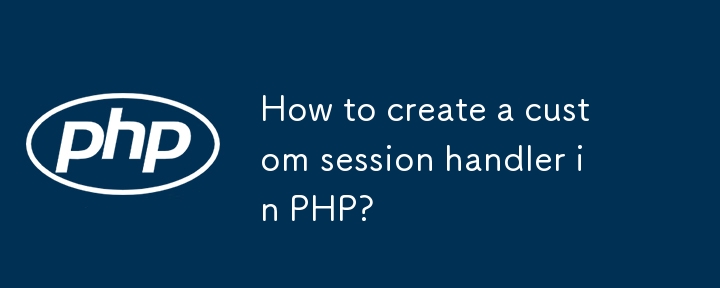
How to create a custom session handler in PHP?
Article Introduction:In PHP, custom session processing mechanism requires implementing the SessionHandlerInterface interface and registering handler. 1. Implement six core methods: open(), close(), read(), write(), destroy() and gc() to complete the session storage logic; 2. Create a custom handler class instance and register it through session_set_save_handler(); 3. Call session_start() before use to start the session. Suitable for improving performance, centralized management and extension functions. It is recommended to pay attention to permission control, concurrency problems and security protection to ensure the correct operation of GC and ensure the sess
2025-07-14
comment 0
976
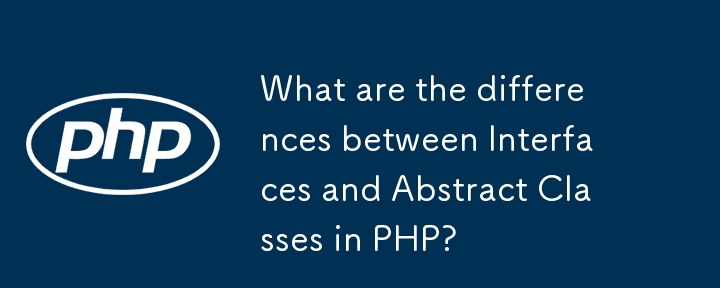
What are the differences between Interfaces and Abstract Classes in PHP?
Article Introduction:In PHP, the difference between interfaces and abstract classes is mainly reflected in the definition, inheritance model and implementation method. 1. The interface only defines method signatures (PHP8.1 supports default methods), emphasizing "what should be done", while abstract classes can contain abstract methods and concrete implementations, emphasizing "how to implement some functions". 2. Classes can implement multiple interfaces, but can only inherit one abstract class, so interfaces are more flexible when combining multiple behaviors. 3. The interface method is exposed by default and cannot have attributes. Abstract classes support arbitrary access control, attributes, constructors and destructors. 4. Use interfaces when a unified API is required or when an interchangeable component is designed; use abstract classes when a shared state or logically related classes. The selection basis is: the interface is used to define the contract, and the abstract class is used to share the implementation logic.
2025-06-23
comment 0
410
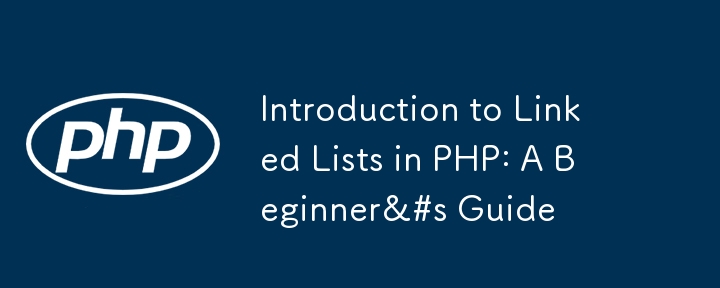
Introduction to Linked Lists in PHP: A Beginner&#s Guide
Article Introduction:The linked list is a basic data structure in computer science. Its elements (referred to as nodes) are connected in turn by pointer. Different from the array, the linked list is dynamic, which means that their size can grow or shrink without the need to adjust the size operation. This tutorial will introduce the basic knowledge of the linked list in PHP.
The structure of the linked list node
Each node in the linked list consists of two parts:
Data: The value stored in the node.
Next: Reference (pointer) to the next node.
The following is an example of implementing basic nodes in PHP:
class node {
public $ data;
public $ night;
public function
2025-01-26
comment 0
1038

Explain Laravel Database Migrations.
Article Introduction:Database migration is a version control tool in Laravel for managing database structure changes. It allows the use of PHP code to define and synchronize table structures to avoid manual operation of the database. 1. The migration file contains methods for up() to perform changes and down() rollback changes; 2. Use the Schema builder and Blueprint class to create tables and fields, and support common types and constraints; 3. Common Artisan commands include migrate run, rollback rollback, reset reset, refresh refresh, and make:migration to generate new files; 4. The recommended practice is to not modify the running migration, but create new files for adjustments, and fill data with factories and seeds.
2025-07-22
comment 0
742
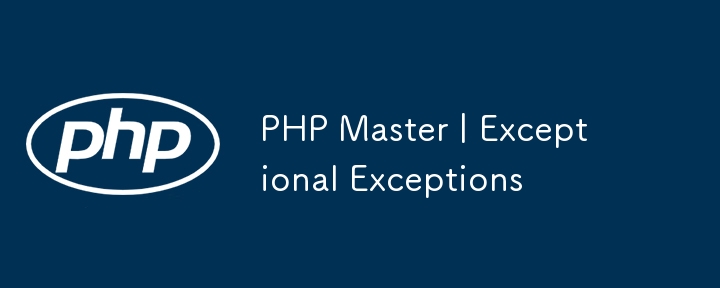
PHP Master | Exceptional Exceptions
Article Introduction:Core points
PHP exception is a special class that can be thrown and caught to indicate unexpected events. Unlike unrecoverable errors, exceptions are intended to be processed by the calling code and bubble upward along the execution chain until they are caught.
The difference between PHP errors and exceptions is that the error is irrecoverable and occurs in the main execution loop, indicating that there is a problem with the stability of the code or environment; while the exception is recoverable and may occur outside the main execution loop, and does not indicate the system. Unstable.
Not all non-successful situations require exceptions to be thrown. Exceptions should be thrown only if they really cannot continue execution. This means that an action that is not a normal operation or standard, an abnormality, deviates from normal and expected situations.
Throw a general Exception
2025-02-25
comment 0
797

Refactoring Legacy PHP to Adhere to SOLID Principles
Article Introduction:To refactoring legacy PHP code, the answer is to improve the maintainability, testability and flexibility of the code through gradual improvement rather than one-time rewrite; specific practices include: 1. Follow the principle of single responsibility and split the classes that undertake too many responsibilities into small classes that are only responsible for specific functions; 2. Follow the principle of opening and closing, expand functions through interfaces and polymorphic mechanisms rather than modifying the original code; 3. Follow the principle of Rich's replacement to ensure that the subclass can transparently replace the parent class without changing the correctness of the program; 4. Follow the principle of interface isolation and split the bloated interface into smaller dedicated interfaces; 5. Follow the principle of dependency inversion, and make high-level modules depend on abstraction rather than concrete implementation through dependency injection; in actual operation, tests should be written first, problem codes should be identified, refactored in small steps, and borrowed
2025-07-25
comment 0
406
